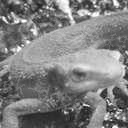JPEG 压缩——第二步:离散余弦变换+量化
量化离散余弦变换系数并使用 离散余弦逆变换恢复。再比较变换前后图片的大小。
量化离散余弦变换系数是用于编码 JPEG 图像的技术。
量化即在对值在预定义的区间内舍入,其中floor、ceil、round等是类似的计算。
在 JPEG 图像中,根据下面所示的量化矩阵量化离散余弦变换系数。该量化矩阵取自 JPEG 软件开发联合会组织颁布的标准量化表。在量化中,将8x 8的系数除以(量化矩阵) Q 并四舍五入。之后然后再乘以 Q 。对于离散余弦逆变换,应使用所有系数。
Q = np.array(((16, 11, 10, 16, 24, 40, 51, 61),
(12, 12, 14, 19, 26, 58, 60, 55),
(14, 13, 16, 24, 40, 57, 69, 56),
(14, 17, 22, 29, 51, 87, 80, 62),
(18, 22, 37, 56, 68, 109, 103, 77),
(24, 35, 55, 64, 81, 104, 113, 92),
(49, 64, 78, 87, 103, 121, 120, 101),
(72, 92, 95, 98, 112, 100, 103, 99)), dtype=np.float32)
由于量化降低了图像的大小,因此可以看出数据量已经减少。
python实现:
import cv2
import numpy as np
import matplotlib.pyplot as plt
# DCT hyoer-parameter
T = 8
K = 4
channel = 3
# DCT weight
def DCT_w(x, y, u, v):
cu = 1.
cv = 1.
if u == 0:
cu /= np.sqrt(2)
if v == 0:
cv /= np.sqrt(2)
theta = np.pi / (2 * T)
return (( 2 * cu * cv / T) * np.cos((2*x+1)*u*theta) * np.cos((2*y+1)*v*theta))
# DCT
def dct(img):
H, W, _ = img.shape
F = np.zeros((H, W, channel), dtype=np.float32)
for c in range(channel):
for yi in range(0, H, T):
for xi in range(0, W, T):
for v in range(T):
for u in range(T):
for y in range(T):
for x in range(T):
F[v+yi, u+xi, c] += img[y+yi, x+xi, c] * DCT_w(x,y,u,v)
return F
# IDCT
def idct(F):
H, W, _ = F.shape
out = np.zeros((H, W, channel), dtype=np.float32)
for c in range(channel):
for yi in range(0, H, T):
for xi in range(0, W, T):
for y in range(T):
for x in range(T):
for v in range(K):
for u in range(K):
out[y+yi, x+xi, c] += F[v+yi, u+xi, c] * DCT_w(x,y,u,v)
out = np.clip(out, 0, 255)
out = np.round(out).astype(np.uint8)
return out
# Quantization
def quantization(F):
H, W, _ = F.shape
Q = np.array(((16, 11, 10, 16, 24, 40, 51, 61),
(12, 12, 14, 19, 26, 58, 60, 55),
(14, 13, 16, 24, 40, 57, 69, 56),
(14, 17, 22, 29, 51, 87, 80, 62),
(18, 22, 37, 56, 68, 109, 103, 77),
(24, 35, 55, 64, 81, 104, 113, 92),
(49, 64, 78, 87, 103, 121, 120, 101),
(72, 92, 95, 98, 112, 100, 103, 99)), dtype=np.float32)
for ys in range(0, H, T):
for xs in range(0, W, T):
for c in range(channel):
F[ys: ys + T, xs: xs + T, c] = np.round(F[ys: ys + T, xs: xs + T, c] / Q) * Q
return F
# MSE
def MSE(img1, img2):
H, W, _ = img1.shape
mse = np.sum((img1 - img2) ** 2) / (H * W * channel)
return mse
# PSNR
def PSNR(mse, vmax=255):
return 10 * np.log10(vmax * vmax / mse)
# bitrate
def BITRATE():
return 1. * T * K * K / T / T
# Read image
img = cv2.imread("imori.jpg").astype(np.float32)
# DCT
F = dct(img)
# quantization
F = quantization(F)
# IDCT
out = idct(F)
# MSE
mse = MSE(img, out)
# PSNR
psnr = PSNR(mse)
# bitrate
bitrate = BITRATE()
print("MSE:", mse)
print("PSNR:", psnr)
print("bitrate:", bitrate)
# Save result
cv2.imshow("result", out)
cv2.waitKey(0)
cv2.imwrite("out.jpg", out)
c++实现:
#include <opencv2/core.hpp>
#include <opencv2/highgui.hpp>
#include <iostream>
#include <math.h>
#include <complex>
const int height = 128, width = 128, channel = 3;
// DCT hyper-parameter
int T = 8;
int K = 4;
// DCT coefficient
struct dct_str {
double coef[height][width][channel];
};
// Discrete Cosine transformation
dct_str dct(cv::Mat img, dct_str dct_s){
double I;
double F;
double Cu, Cv;
for(int ys = 0; ys < height; ys += T){
for(int xs = 0; xs < width; xs += T){
for(int c = 0; c < channel; c++){
for(int v = 0; v < T; v ++){
for(int u = 0; u < T; u ++){
F = 0;
if (u == 0){
Cu = 1. / sqrt(2);
} else{
Cu = 1;
}
if (v == 0){
Cv = 1. / sqrt(2);
}else {
Cv = 1;
}
for (int y = 0; y < T; y++){
for(int x = 0; x < T; x++){
I = (double)img.at<cv::Vec3b>(ys + y, xs + x)[c];
F += 2. / T * Cu * Cv * I * cos((2. * x + 1) * u * M_PI / 2. / T) * cos((2. * y + 1) * v * M_PI / 2. / T);
}
}
dct_s.coef[ys + v][xs + u][c] = F;
}
}
}
}
}
return dct_s;
}
// Inverse Discrete Cosine transformation
cv::Mat idct(cv::Mat out, dct_str dct_s){
double f;
double Cu, Cv;
for(int ys = 0; ys < height; ys += T){
for(int xs = 0; xs < width; xs += T){
for(int c = 0; c < channel; c++){
for(int y = 0; y < T; y++){
for(int x = 0; x < T; x++){
f = 0;
for (int v = 0; v < K; v++){
for (int u = 0; u < K; u++){
if (u == 0){
Cu = 1. / sqrt(2);
} else {
Cu = 1;
}
if (v == 0){
Cv = 1. / sqrt(2);
} else {
Cv = 1;
}
f += 2. / T * Cu * Cv * dct_s.coef[ys + v][xs + u][c] * cos((2. * x + 1) * u * M_PI / 2. / T) * cos((2. * y + 1) * v * M_PI / 2. / T);
}
}
f = fmin(fmax(f, 0), 255);
out.at<cv::Vec3b>(ys + y, xs + x)[c] = (uchar)f;
}
}
}
}
}
return out;
}
// Quantization
dct_str quantization(dct_str dct_s){
double Q[T][T] = {{16, 11, 10, 16, 24, 40, 51, 61},
{12, 12, 14, 19, 26, 58, 60, 55},
{12, 12, 14, 19, 26, 58, 60, 55},
{14, 17, 22, 29, 51, 87, 80, 62},
{18, 22, 37, 56, 68, 109, 103, 77},
{24, 35, 55, 64, 81, 104, 113, 92},
{49, 64, 78, 87, 103, 121, 120, 101},
{72, 92, 95, 98, 112, 100, 103, 99}
};
for (int ys = 0; ys < height; ys += T){
for (int xs = 0; xs < width; xs += T){
for(int c = 0; c < channel; c++){
for(int y = 0; y < T; y++){
for(int x = 0; x < T; x++){
dct_s.coef[ys + y][xs + x][c] = round(dct_s.coef[ys + y][xs + x][c] / Q[y][x]) * Q[y][x];
}
}
}
}
}
return dct_s;
}
// Compute MSE
double MSE(cv::Mat img1, cv::Mat img2){
double mse = 0;
for(int y = 0; y < height; y++){
for(int x = 0; x < width; x++){
for(int c = 0; c < channel; c++){
mse += pow(((double)img1.at<cv::Vec3b>(y, x)[c] - (double)img2.at<cv::Vec3b>(y, x)[c]), 2);
}
}
}
mse /= (height * width);
return mse;
}
// Compute PSNR
double PSNR(double mse, double v_max){
return 10 * log10(v_max * v_max / mse);
}
// Compute bitrate
double BITRATE(){
return T * K * K / T * T;
}
// Main
int main(int argc, const char* argv[]){
double mse;
double psnr;
double bitrate;
// read original image
cv::Mat img = cv::imread("imori.jpg", cv::IMREAD_COLOR);
// DCT coefficient
dct_str dct_s;
// output image
cv::Mat out = cv::Mat::zeros(height, width, CV_8UC3);
// DCT
dct_s = dct(img, dct_s);
// Quantization
dct_s = quantization(dct_s);
// IDCT
out = idct(out, dct_s);
// MSE, PSNR
mse = MSE(img, out);
psnr = PSNR(mse, 255);
bitrate = BITRATE();
std::cout << "MSE: " << mse << std::endl;
std::cout << "PSNR: " << psnr << std::endl;
std::cout << "bitrate: " << bitrate << std::endl;
cv::imwrite("out.jpg", out);
//cv::imshow("answer", out);
//cv::waitKey(0);
cv::destroyAllWindows();
return 0;
}
输入:

输出:

 极客教程
极客教程